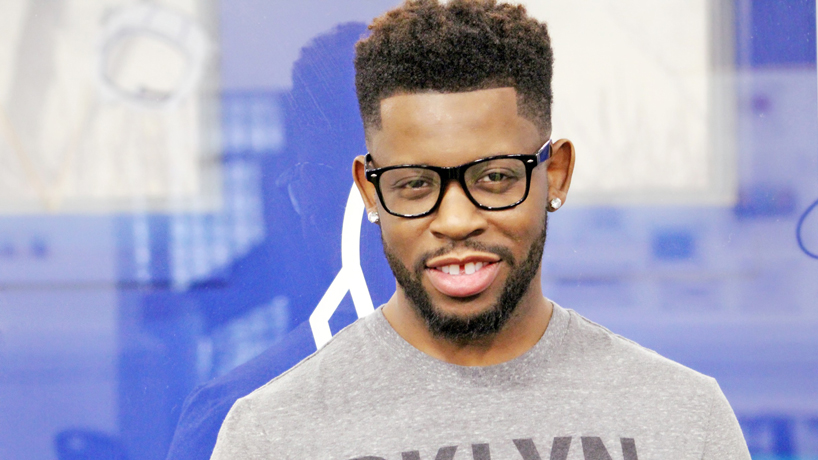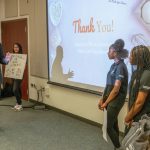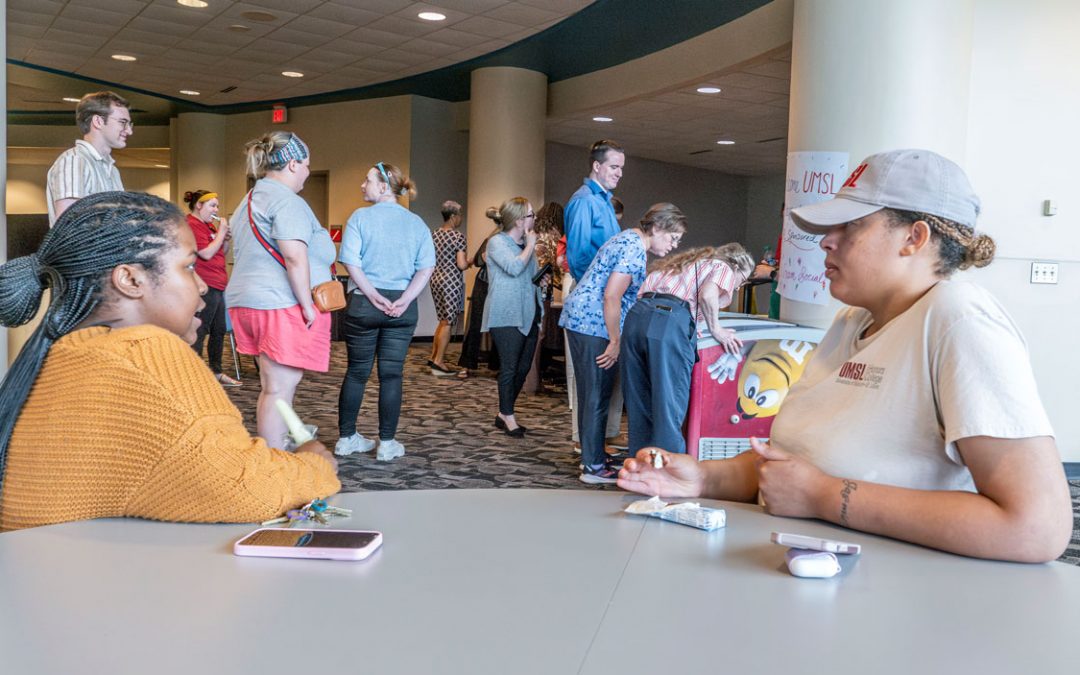
Tim Hykes, a University of Missouri–St. Louis studio art alumnus and UX consultant at World Wide Technology has been named a top UX designer by Adobe. Hykes is also known for projects such as 28 Days of Black Designers and the Design + Diversity Conference. (Photo courtesy of Tim Hykes)
“WHAT!? ARE YOU SERIOUS!?”
That’s how Tim Hykes responded to an email alerting him that Adobe had named him a “2019 UX Designer to Watch.” Hykes, a University of Missouri–St. Louis studio art alumnus, said the email seemed rather nonchalant, surprising him when he opened it.
“The way that I am, the way that I act, my personality, that’s the same way I portray it in email,” Hykes said.
It’s easy to take Hykes’ word on that. His bold personality has served him well as a UX consultant at World Wide Technology, as a member of the American Institute of Graphic Arts – currently known as AIGA, the professional association for design – and as a public speaker. He has previously served as president of AIGA’s St. Louis chapter and currently serves as the co-chair of the Chapter Advisory Council of the Midwest region.
After graduating from UMSL in 2015, AIGA was a pillar for Hykes, and a chance encounter at one of the organization’s leadership conferences helped him connect with Adobe.
“I was at the bar casually joking as I normally do,” he said. “Kerensa Hogan brought me some drinks and wanted to talk more about me and design and what I do, but I didn’t know that I was talking to one of AIGA’s biggest sponsors, which was Adobe.”
It was a launchpad for Hykes, providing him with an opportunity to address diversity in the field of design – a topic close to his heart and an avenue to reach a larger audience. In February 2017, he launched 28 Days of Black Designers, a project spotlighting the stories of African American and black designers in fields from fashion to architecture.
“That project was kind of big within social media,” Hykes said. “One of the biggest successes of the project came from Adobe’s backing and helping me to communicate it to a larger audience.”
From there, Adobe invited Hykes to participate in one of the company’s live design sessions, where he brainstormed and designed a fictional app on the spot in front of an audience in San Francisco. The experience strengthened his connections in the industry and also encouraged the growth of his Design + Diversity Conference.
“That was something that was thought up at UMSL,” Hykes said. “My senior thesis at UMSL was ‘Design + Diversity,’ and I was looking at ways to make the design industry more diverse because I had this huge scare about going into the field and not fitting in, basically, because I didn’t see people who looked like me doing the work that I wanted to do.”
That takes a toll on people who don’t feel represented. Hykes said it can lead you to think that you don’t belong, that the people around you don’t care or that you won’t be recognized for your work.
“All these things go to your head,” he said. “When you’re working in these environments, it really puts pressure on you to be more like them.”
In the past, Hykes succumbed to that pressure, code switching – a practice of altering speech situationally – in professional environments. Design + Diversity, now headed into its fifth year, addresses these issues with open conversations, and it also serves as an example for young designers.
“My idea was, the next generation coming up, seeing someone like me working in it, and being able to identify with that,” Hykes said.
Hykes credits the conference with solidifying him as a UX designer and setting him on a path to WWT, where he’s completely comfortable being himself. That’s partly due to WWT’s core values, known as the THE PATH (trust, humility, embracing change, passion, attitude, team player, honesty and integrity) but also due to Hykes’ insistence on the matter.
“Interviewing at World Wide Technology, I told them that it’s very important that I can come in and be who I am, and if I can’t, this is not the job for me,” he said.
Far from balking at the suggestion, the company has encouraged his work and was receptive when he wanted to get involved in diversity efforts in the office. Now, he’s bringing what he’s learned to the workplace.
“Currently, I’m writing stories for the organization that are going to go up on a website that focuses on diversity and inclusion,” Hykes said.
Most people would probably be content, if not overwhelmed, with the number of projects Hykes is taking on. But not him. He’s adding one more to his plate. The still unnamed project will be a resource for people who want to get into UX design.
“With me getting that question so much, I’m getting ready to launch a site that breaks down the best ways that I would do it if I had to do it again,” he said.
The site will cover topics essential to landing a UX job such as portfolio composition, resume design, common UX vocabulary, the UX design process and potential interview questions. Hykes is about 75 percent finished with the site, but he’s willing to give himself a break on the deadline.
“No, it’s not going to be launched by the end of the year, let me not do that,” he said with a laugh. “It will probably be launched in the first quarter of next year.”














